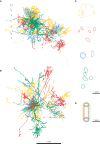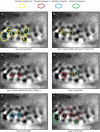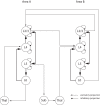Whose Cortical Column Would that Be?
- PMID: 20640245
- PMCID: PMC2904586
- DOI: 10.3389/fnana.2010.00016
Whose Cortical Column Would that Be?
Abstract
The cortical column has been an invaluable concept to explain the functional organization of the neocortex. While this idea was born out of experiments that cleverly combined electrophysiological recordings with anatomy, no one has 'seen' the anatomy of a column. All we know is that when we record through the cortex of primates, ungulates, and carnivores in a trajectory perpendicular to its surface there is a remarkable constancy in the receptive field properties of the neurons regarding one set of stimulus features. There is no obvious morphological analog for this functional architecture, in fact much of the anatomical data seems to challenge it. Here we describe historically the origins of the concept of the cortical column and the struggles of the pioneers to define the columnar architecture. We suggest that in the concept of a 'canonical circuit' we may find the means to reconcile the structure of neocortex with its functional architecture. The canonical microcircuit respects the known connectivity of the neocortex, and it is flexible enough to change transiently the architecture of its network in order to perform the required computations.
Keywords: Daisy; bouton cluster; canonical microcircuit; cortical column; neuroanatomy.
Figures





References
-
- Barlow H. B. (1980). “Cortical function: a tentative theory and preliminary test,” in Neural Mechanisms in Behaviour, ed. McFadden D. (New York: Springer-Verlag; ), 143–171
LinkOut - more resources
Full Text Sources

